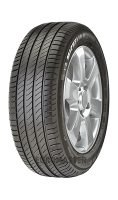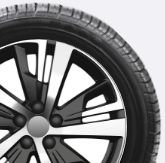
MICHELIN Tyres

Popular Patterns
Michelin tyres at ATS Euromaster
Michelin tyres are available at more than 150 ATS Euromaster centres across the UK. Enter your postcode to see which centres are nearby, then choose the location that suits you best and book your visit online.
Our technicians follow Michelin’s fitting standards and use the right methods to ensure the job is done properly.
Find your Michelin tyres by season
Weather affects the road and your tyres should match the conditions. You can explore Michelin’s range designed for warm, cold or changing weather (all-season) and choose tyres that fit how and where you drive.
- Summer tyres give you more control in dry and mild weather.
- Winter tyres stay reliable when temperatures drop.
- All-season tyres combine both traits, providing the best of both tyres, all year round.
Browse our range of Michelin tyres below, including the Michelin Pilot Sport 4 Michelin Pilot Sport 5; Michelin CrossClimate 2 and Michelin CrossClimate 2 SUV; and Michelin Primacy 4. Find your ideal fit for your vehicle with our selection of Michelin tyres.
Good to know
Michelin puts focus on cutting waste and improving how tyres affect fuel use and emissions. Some models use materials that last longer without losing grip, which means fewer replacements and less raw material use over time. Other tyres help reduce rolling resistance and can lower fuel consumption or extend battery range in electric vehicles..
Tyre Range
How to read Michelin tyre sizes and ratings
Every tyre comes with a code on the sidewall. It tells you exactly what the tyre is built for. Understanding that code helps avoid mistakes when replacing your tyres.
Take 225/45 R17 94Y as an example.
- 225: the width in millimetres
- 45: the sidewall height, as a percentage of the width
- R17: fits a 17-inch wheel
- 94: the load rating — how much weight it can carry
- Y: the speed rating — the top speed it can handle safely
There’s also a date code that’s stamped in four digits, like 1523. That means it was made in week 15 of 2023. This matters when checking tyre age since rubber breaks down over time, even if the tread still looks good.
The load and speed ratings are set by your vehicle. Fitting tyres with lower values can affect safety and may not pass an MOT. If you drive with a full load often, or carry extra weight, you may need a higher load rating than the factory default.
Michelin tyres for EVs and hybrid performance
Extend battery range and reduce energy loss
The Michelin e.Primacy focuses on keeping energy use down. It rolls easily and helps electric cars drive further on a single charge. Hybrid drivers may notice lower fuel use too. The tread reduces friction while keeping control on wet roads and in daily driving.
Strong grip with less noise
The Michelin Pilot Sport EV is built for control at higher speeds. It handles power well and wears more slowly than standard tyres. Drivers feel more in control during quick acceleration and fast cornering.
Road noise is another factor. With little sound from the engine, tyres can seem loud. Michelin uses rubber blends and tread patterns that soften contact with the road. This creates a quieter ride and keeps the focus on comfort.
FAQs about Michelin tyres
Michelin designs tyres to handle a wide range of conditions while holding up over time. If you’re looking for steady grip, less wear, and reliable handling in wet or cold weather, they offer a dependable long-term option.
Yes, as a premium tyre brand, Michelin tyres will likely last longer than most mid-range or budget tyres. However, like with all car tyres, there are external factors that will impact how long Michelin tyres last, such as driving style and how well they're maintained.
Michelin tyres usually last around 20,000 - 45,000 miles. However, like with any car tyres, this depends on various external factors, and if you notice abnormal or extreme tyre wear before you reach this mileage, you should have them replaced.
Yes. Michelin CrossClimate tyres work well in both dry and wet conditions. Many drivers use them as an all-in-one option without needing to change tyres between seasons.
Several patterns fit electric and hybrid cars. The Michelin e.Primacy, for example, helps reduce rolling resistance, which can support battery range and cut road noise inside the car.
You can search by tyre size or vehicle registration on our website. You’ll see all the options available at your local centre, and you can book your fitting online.
If you spend a lot of time on motorways, you’ll want a tyre that stays stable at higher speeds and feels comfortable over long distances. Michelin Primacy 4 fits this need well. It offers solid grip in the wet and keeps braking performance as the tread wears.
That depends on your car and the condition of your tyres. Replacing all four gives the best balance and grip. In some cases, changing just two tyres is possible, as long as they match the ones that stay on the vehicle. Fitting the new pair on the rear axle helps maintain control. If you're unsure, our technicians can take a look and guide you.
It's always best to use the same brand and model across the same axle. Mixing different tyres can change how your car handles. You’ll particularly notice it in bad weather. If you need to replace just one or two, our team can help you find the closest match to what you already have.
You should check your tyre pressure and tread depth at least once a month. Regular checks help you spot early wear and avoid issues on the road. If you’re unsure what to look for, our teams can check it for you when you visit.
Michelin makes tyres in many countries such as France, Spain, the UK, Poland, Canada, Brazil and Serbia. The production site can vary depending on the model and the market.
You will find the tyre date code on the sidewall of your Michelin tyre in the DOT (Department Of Transportation) field, with several other tyre markings. The date codes are the final four numbers. The first two numbers indicate the week and the last two numbers indicate the year of production. For example, a tyre date code 2321 would mean the tyre was manufactured in the 23rd week of 2021.






















